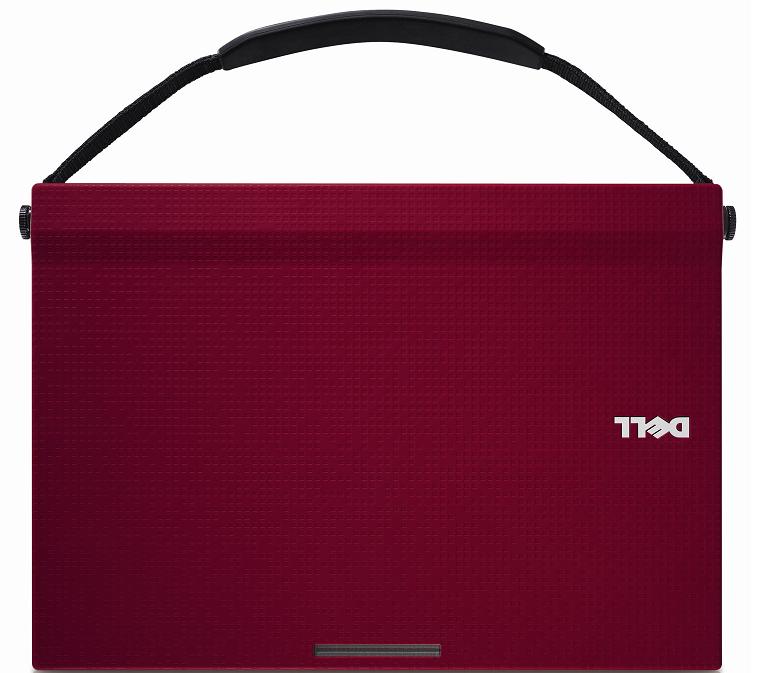
Available with carry handle and wide range of colors
Fitted with a touch screen and weighing just 2.91 lbs (1.32 kg), the Dell Latitude 2100 is an ultra-portable with a difference. Originally designed for kids in college, the 2100 has a tough rubberised exterior and sturdy screen hinges. You shouldn’t throw it off a building but it is probably stronger than many laptops.
But don’t be fazed by the student oriented design, the 2100 has broad appeal as a general purpose netbook that prioritises portability over performance. If you want a high spec notebook for power user applications the Latitude 2100 is not for you, but if you want a portable PC for email and basic business software, the 2100 should be on your short-list.
Powered by a 1.60GHz Intel Atom N270 (512KB L2 Cache, 533MHz FSB) and a choice of solid state and traditional hard drives, the 2100 combines excellent battery life with processing and storage capable of most tasks. We’d expect at least three hours battery life before recharging, although your mileage may vary depending on the software you run and the hard drive you chose.
Software options include Ubuntu Linux, in which case the netbook costs $349, or Windows XP and Vista, costing $379. We tested the Windows XP version fitted with a 150GB 5400rpm hard drive and 2GB RAM, which costs $434. Other storage options include a 250GB hard disk and 16GB solid state drive, and nice features of the 2100 that are sadly missing from many competitors include a built in web cam and SD memory card slot.
Another remarkable feature is the 10.1″ wide-screen LED (1024 x 576) with touch screen option ($40). We found the touch screen clear and bright – it’s a good choice for web browsing and many other tasks that would otherwise need to be done using a traditional mouse. There’s also a touch pad, which is probably a better option for software that requires hands on the keyboard.
A light strip on the lid can be configured to indicate network activity and is really a throwback to the education centred design. The idea is to show supervisors when the student is accessing the network, perhaps confirming they are working as directed, or even warning the student maybe browsing when they shouldn’t. On our review system the light was configured to illuminate when the Wireless LAN was switched on.
Network connectivity comes in three forms. A built in Gigabit Ethernet interface means plenty there’s of bandwidth for large data transfers. An optional Bluetooth module ($15) will come in handy for linking to headsets and syncing with mobile phones. However, most people will rely on one of the built in WiFi options for everyday connectivity. Dell offers a choice of four WiFi setups, ranging from basic 802.11g up to a fast and versatile 802.11a/g/n combination. Our review unit was fitted with the low cost Dell Wireless 1397 (802.11g), which worked well in our lab but would not have the same throughput as the higher end options.
In our tests we found the Latitude 2100 was fine running Microsoft Office and other business software. It also handled streaming video fairly well but playback was occasionally just a tiny bit shaky during our lab tests.